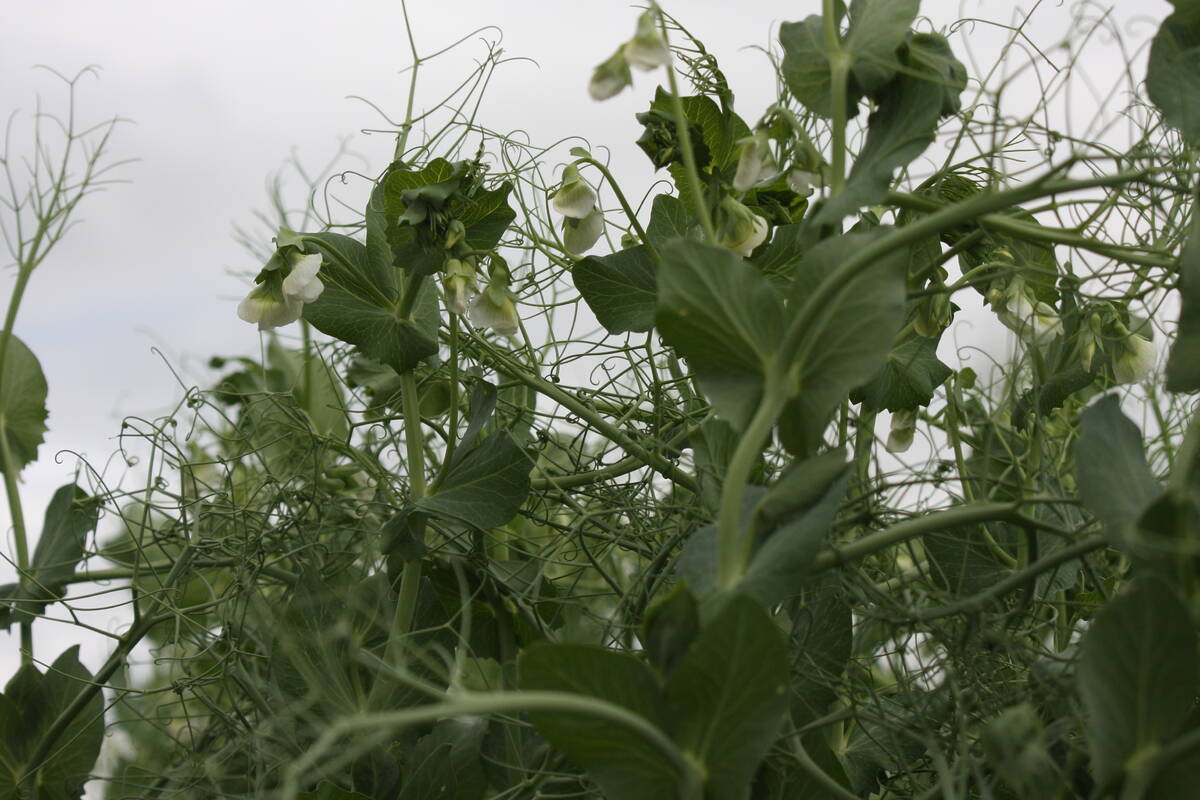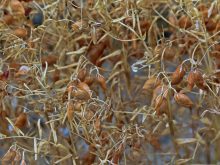WHISTLER, B.C. — Canada is facing a massive carryout of peas at the end of 2025-26, and that is using an optimistic outlook, says an analyst.
Chuck Penner, analyst with LeftField Commodity Research, keeps hearing one word when he talks to farmers about their pea harvest.
Other coverage from the 2025 Pulse and Special Crops Convention:
- U.S. market can’t easily be replaced
- Chickpea harvest forecasts see big disparity
- VIDEO: 2025 pulse and special crops convention kicks off in Whistler
- Traders forecast record lentil yields for Canada
- Working groups established to address challenges in the containerized and bulk movement of commodities
- Geopolitics can change trade routes
“They’re surprised, and not just a little surprised,” he told delegates attending the 2025 Pulse and Special Crops Convention.
Read Also

Stacking Canada up on gene editing livestock
Canada may want to gauge how Argentina and other countries have approached gene editing in livestock and what that has meant for local innovation.
“They’re shocked by some of the yields that are coming in.”
Late-season rains and a mild summer created ideal growing conditions for the pulse crop in the central and northern portions of the Prairie grain belt.
Crop ratings usually drop during the growing season, but this year they just kept improving as the season progressed.
Penner thinks Statistics Canada’s initial yield estimate of 36.6 bushels per acre is too low. He is using 40, and that is probably a very conservative number.
Some growers he spoke to thought they were going to get 40 and ended up with 60 bu. per acre.
His yield number would result in three million tonnes of yellow peas, 550,000 tonnes of greens and 200,000 tonnes of the minor classes.
That is in addition to a healthy 544,000 tonnes of carryout from 2024-25, the result of a poor export program since November.
This all means there is going to be nearly four million tonnes of total supply.
Penner is forecasting an “optimistic” 2.2 million tonnes of exports, assuming China drops its 100 per cent import tariff on Canadian peas in the coming months and that India does not reinstate its tariffs.
That would leave a price-depressing 1.15 million tonnes of carryout at the end of 2025-26, more than double last year’s ending stocks, which would result in an ugly 40.6 per cent stocks-to-use ratio.
“For farmers, it’s not a friendly outlook,” he said.
That, along with normal harvest pressure, is why pea prices have been cratering in recent weeks.
Penner thinks prices could fall even lower before bottoming out.
Vivek Agrawal, director of JLV Agro, said India is expecting a nice crop of pulses due to plentiful and widespread monsoon rainfall.
That is driving down pulse prices in that market, which are being further reduced by imported product.
“That is a very tricky situation in India because the traders and importers want to put some duty on the pulses so the supply from abroad is cut down and the prices will go up,” he said.
However, the government is not keen on duties because it is trying to control food price inflation.
“The government’s main priority is to keep price control, and they are very successful,” said Agrawal.
There is also a possibility that excess rain could cause some damage and reduce yields, and then the government would need imports.
The government is playing a wait-and-see game before making any decisions, he said.
Sunny Chen, a trader with Parrish and Heimbecker, thinks Penner’s Canadian production numbers are realistic, although the average yield could be even higher than 40 bu.
He said 650,000 tonnes of this year’s crop has already been loaded on vessels destined for Bangladesh and India.
Chen believes prices are close to the bottom because they are meeting selling resistance at today’s values.
Mike James, a trader with Richardson International, said growers were initially reluctant to sell new crop until they saw the yields they were getting.
He thinks farmers sold about 20 per cent of the crop right off the combine and are now locking the bins until prices improve.
Reed Maybee, a trader with Agrocorp Processing, said the quality of this year’s crop is very strong west of the line running from Regina through Saskatoon.
The peas are clean and there is a very low number of splits and cracked seed coats.
However, there could be some bleaching of green peas east of the Regina-Saskatoon line.
He said there is a large supply of maples and marrowfats carried over from last year.
James said there should be strong demand from China’s fractionation market if the tariff is lifted, but he does not anticipate much feed demand.
Penner said U.S. farmers produced 800,000 tonnes of peas, which is similar to the last several years.
Exports have been poor due to a slowing of demand from the U.S. Agency for International Development program.
He is forecasting 300,000 tonnes of exports and 175,000 tonnes of carryout in that market in 2025-26.
Farmers in the Black Sea region harvested a monster crop of 4.75 million tonnes, a big rebound from the previous year, which is another reason prices are so low.
















